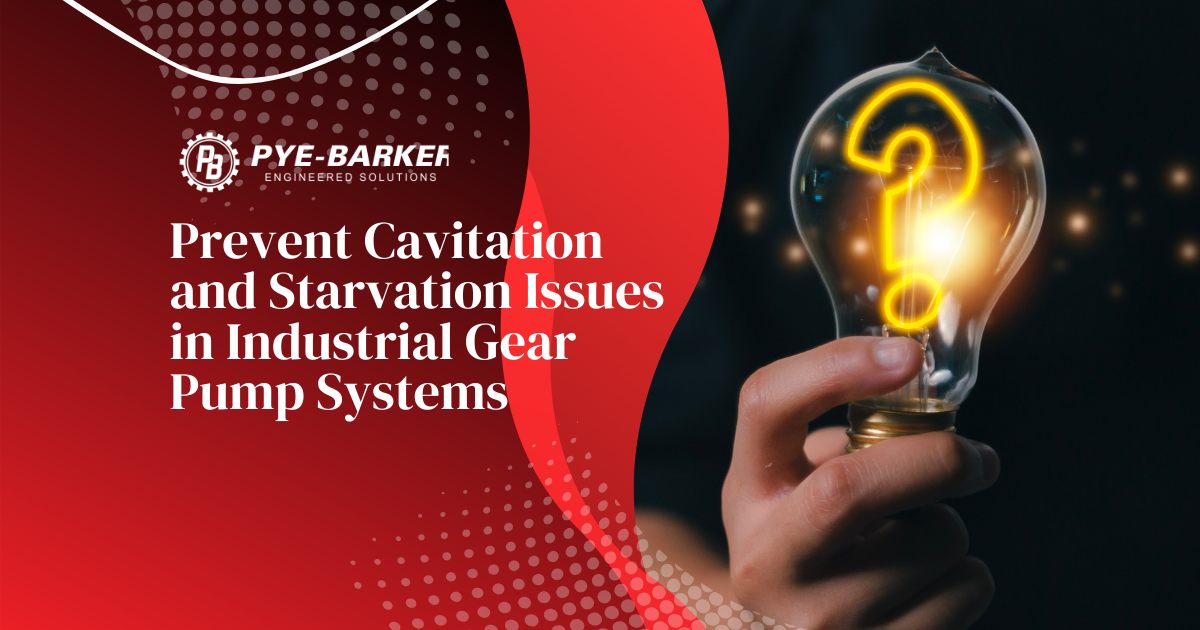
Introduction
In industrial applications, even minor oversights in pump installation and operation can lead to significant issues like cavitation, inefficiency, and wear. At Pye-Barker Engineered Solutions, we specialize in helping engineers and technicians optimize their pumping systems. Here, we’ll explore a recent case in Middle Georgia where our expertise helped resolve common issues in a Viking L4724 Positive Displacement Internal Gear Pump.
During a recent consultation, a customer approached us with two issues in their operation. They were using a Viking L4724 pump to recirculate material in a large storage tank while introducing additional materials by adjusting the intake valves. However, they faced:
When examining their setup, the first noticeable problem was improper pipe length between the pump’s suction port and the intake Tee/Valve. To avoid cavitation, it’s critical to maintain a straight run of pipe at least ten times the pipe diameter before reaching the pump. Shorter lengths restrict flow, causing friction and resulting in noisy cavitation during startup.
Improper Pipe Sizing and Starvation
The customer also used a 1-inch steel pipe connected to an 8-foot 1½-inch hose, ending in a 2-inch Tee located just six inches from the pump inlet. This setup led to liquid starvation and cavitation, as it could not pull fluid effectively from the 55-gallon drum.
While the customer’s engineer proposed a Variable Frequency Drive (VFD) to gradually ramp up the pump’s speed, we advised that it may not fully solve the issues due to inherent design flaws in the system. A VFD might reduce noise but wouldn't address cavitation or starvation effectively. Nevertheless, we provided a quote for the VFD as requested, highlighting the importance of sound pumping principles from the outset.
This experience underscores the value of adhering to basic pumping principles in system design. Properly sized pipes and appropriate distances between pump components can significantly reduce startup noise, prevent cavitation, and enhance overall efficiency.
Conclusion
Avoiding common mistakes in pump installations can save time, reduce noise, and extend equipment life. For those needing expert guidance on industrial pumping systems, [Company Name] is here to help. Reach out to our team to optimize your setup and enhance system performance.
FAQs
1. What causes cavitation in industrial pumps?
Cavitation typically occurs when liquid flow is restricted before reaching the pump, causing air pockets that create noise and reduce efficiency.
2. Why is proper pipe length important in pump systems?
A minimum pipe length of 10 times the pipe diameter allows for smooth flow, reducing friction and preventing cavitation issues.
3. How can a VFD help with pump startup?
A VFD can provide a “soft start” by gradually ramping up the pump speed, which can reduce startup noise, though it may not address all cavitation causes.
4. What are the signs of a starving pump?
Signs include reduced flow, increased noise, and difficulty in maintaining consistent operation, indicating that the pump isn’t receiving sufficient fluid.



Notifications